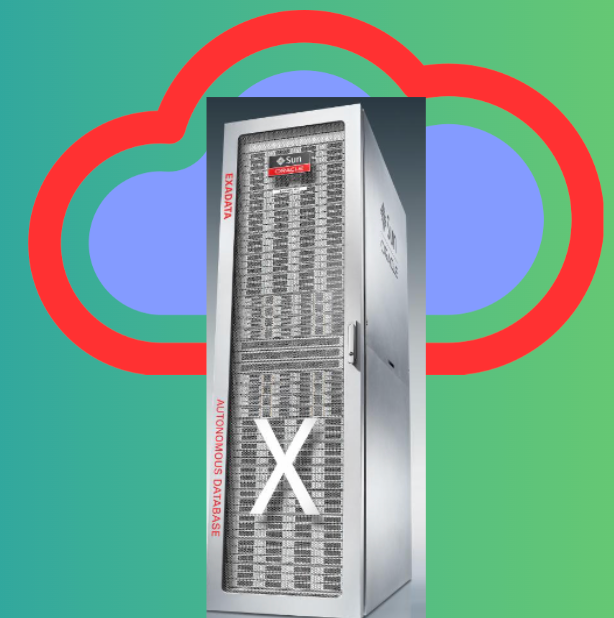
As Oracle Database Administrators (DBAs), understanding the evolving landscape of Oracle Exadata systems is crucial for optimizing database performance, scalability, and reliability. This article provides a detailed comparison of the Oracle Exadata X-6, X-8M, and X-10M models.
Processor and Core Count
X-6: The Exadata X-6 uses Intel Xeon E5-2699 v3 processors (Haswell), featuring 18 cores per processor. While this architecture provides a robust foundation for database operations, it is outpaced by newer generations in terms of performance and efficiency.
X-8M: Upgrading to the X-8M model, we see Intel Xeon 8260 processors (Cascade Lake) with 24 cores per processor. This increase in core count directly translates to improved parallel processing capabilities, allowing for more efficient handling of large workloads and complex queries.
X-10M: The latest X-10M model utilizes Intel Xeon 8380 processors (Ice Lake), boasting 40 cores per processor. This significant leap in core count enhances multi-threading performance, making it ideal for environments with high transactional throughput and large-scale analytical processing.
Memory Capacity
X-6: Memory per node ranges from 256 GB to 1.5 TB. Adequate for many applications, this memory capacity may become a bottleneck for memory-intensive workloads or large in-memory databases.
X-8M: The X-8M model standardizes at 1.5 TB per node. This substantial memory upgrade supports larger in-memory database operations, reduces disk I/O, and accelerates data retrieval times.
X-10M: Pushing the boundaries further, the X-10M offers up to 3 TB of memory per node. This increase supports even larger in-memory databases and significantly boosts performance for applications requiring extensive data caching.
Storage Capabilities
Flash Storage Capacity
X-6: Offers up to 28.8 TB of raw flash storage. Flash storage dramatically improves read and write speeds, but the capacity may be limited for extremely large datasets.
X-8M: Provides up to 50 TB of raw flash storage. This increase supports higher IOPS, enhancing performance for transactional workloads and reducing latency.
X-10M: Up to 100 TB of raw flash storage. This substantial boost in flash storage capacity supports very high IOPS and throughput, essential for real-time analytics and high-frequency transaction processing.
Disk Storage Capacity
X-6: Supports up to 336 TB of raw disk storage. While sufficient for many applications, larger enterprises may find this limiting for extensive data warehousing needs.
X-8M: Expands to 720 TB of raw disk storage. This increased capacity supports larger databases and extensive data archival, providing a balance between performance and storage needs.
X-10M: Offers up to 1.5 PB of raw disk storage, making it suitable for the most demanding data warehousing and big data applications. This capacity ensures that storage is not a bottleneck even for the largest datasets.
Networking
X-6: Utilizes InfiniBand QDR (40 Gb/s). While offering high bandwidth and low latency, it is outperformed by newer networking technologies.
X-8M and X-10M: Both models use 100 Gb/s RDMA over Converged Ethernet (RoCE). This upgrade delivers significantly higher throughput and lower latency, critical for data-intensive operations and distributed computing environments.
IOPS and Throughput
IOPS (Flash)
X-6: Capable of up to 5.4 million IOPS. This performance is substantial but may be insufficient for extremely high-demand applications.
X-8M: Reaches up to 12 million IOPS. This increase supports higher transaction rates and reduces response times for critical applications.
X-10M: Achieves up to 22 million IOPS, making it the best choice for environments with the highest performance requirements, such as real-time transaction processing and high-frequency trading systems.
Throughput (Disk)
X-6: Provides up to 100 GB/s of throughput. Suitable for many workloads, but higher throughput may be necessary for big data analytics and large-scale data processing.
X-8M: Delivers up to 250 GB/s of throughput, significantly enhancing the ability to handle large data volumes efficiently.
X-10M: Offers up to 350 GB/s of throughput, ensuring optimal performance for the most demanding data processing tasks.
Advanced Features
Database In-Memory (DRAM): All three models support Oracle’s Database In-Memory option, enabling faster analytics and real-time data processing by keeping data in DRAM.
Hybrid Columnar Compression: Supported across all models, this feature optimizes storage efficiency and performance by compressing data, reducing the storage footprint, and improving query performance.
Smart Scan: Available on all models, Smart Scan offloads intensive query processing to storage servers, reducing the load on database servers and improving query performance.
Below is the comparison in tabular format.

